Chinese Name: 上海法租界 Pronunciation: Shànghǎi Fǎzūjiè
Building Time: 1849
Best Visiting Time: All year round
Address: 22 Jianguo Middle Road, Huangpu District, Shanghai, China
Building Function: The largest and most prosperous French Concession in China
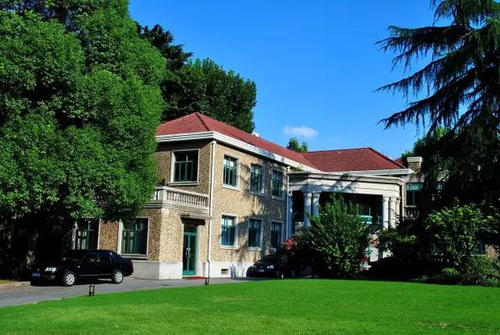
The Former French Concession was the most advanced residential area in old Shanghai, with a uniform architectural style. Shanghai’s reputation as “Oriental Paris” also derives from the French Concession because its architectural style is independent of the public Concession and almost the same as the architectural style of Paris thousands of miles away.
There are a lot of buildings with red bricks and grey tiles left in the old concession period. Walking in the shade of the trees on both sides of the street, your body and mind will get complete relaxation. There are several former residences of celebrities and the former sites of government offices in the period of the Republic of China. You can also see high-end and exquisite shopping malls interspersed with old buildings standing along the Huaihai Middle Road, which is Shanghai’s unique charm.
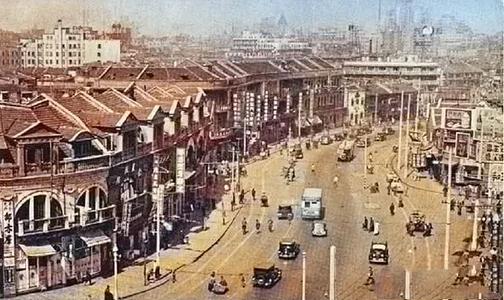
Shanghai is the first international city. Shanghai Concession was industrialized and internationalized earlier than the Hong Kong colony. Although the British Concession in Shanghai is more famous than the French Concession, the French Concession also has an indelible influence on the appearance of today’s Shanghai. The French plane trees along Xujiahui Road is the symbol of French Concession. Many of the beautiful residential areas in Shanghai today belonged to the Former French Concession.
The origin of the Former French Concession can be traced back to 1842 when Hong Kong opened its port. In this year, the British and Chinese representatives signed the Nanjing Treaty, opening five trading ports, so the British had the right to set up consulates at each port. Almost a year later, the Americans signed a similar treaty with the Qing government in Macao. Knowing that, opening the door of China’s trade became the most important issue for the French Chamber of Commerce at that period. Soon after, the representatives of the French government and the Qing government signed a trade treaty in the Huangpu district.
In 1860, the Anglo-French Allied Force occupied Tianjin and Beijing, which was an epoch-making event in the French Concession in Shanghai. At that time, the number of British and French troops stationed in Shanghai had greatly increased. Shanghai also became the military logistics base of the two countries. Besides, under the rule of Napoleon III, France and Britain became closer than before as they had common interests in China, so they sent troops together to participate in the Crimean War against Russia. This series of events accelerated the process of British and French control of Shanghai.
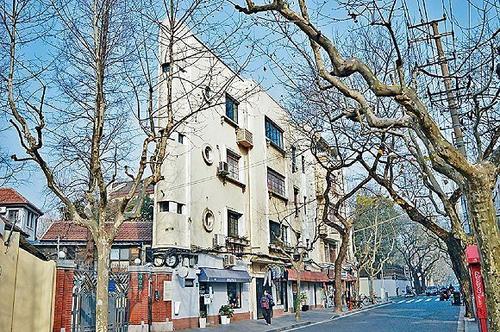
After several wars, the French Concession occupied several pieces of land, from 1843 to 1943 and it became the largest one of the four French Concessions in China. Since the 1860s, the French had built churches and schools here. In the 1860s, because the Qing army was defeated by the Taiping army, the prestige of the Qing government among the people quickly declined, as a result, the power of the Concession continued to grow, the French in Shanghai started to buy real estate and the area of the French Concession in Shanghai expanded day by day.
However, the business activities in the French Concession were still inferior to those in the British Concession, which also reflected that the main target of French foreign trade was not China. For the French, the commercial value of Shanghai had been limited. However, with the establishment of factories in China by Western powers and the upgrading of production standards, as well as the opening up of Hankou(a city in Wuhan province) until the 1930s, Shanghai’s status in foreign trade and financial industry was growing day by day, and Shanghai gradually became a big city.
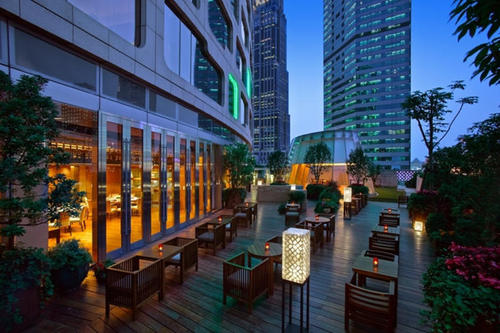
Xintiandi Entertainment Center covers an area of 30,000 square metres and a construction area of 60,000 square metres. The exterior of the Shikumen complex retains the original brick walls and roof tiles. However, the interior of each building is tailored according to the lifestyle of the 21st century. You can see international galleries, theme restaurants, fashion shops and coffee bars here.
Xintiandi Entertainment Center embodies the historical and cultural features of Shanghai. As one of the hottest tourist destinations integrating Chinese and Western culture, the Xintiandi got renovation based on the Shanghai old buildings.
Xintiandi has changed the original residence function of Shikumen and has endowed it with business functions. Now it has become an entertainment centre with functions such as dining, shopping, and performing arts.
On January 6, 2020, it was selected as one of the top ten new landmark buildings in Shanghai.
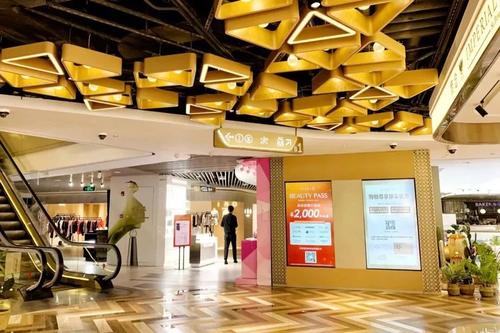
Shanghai K11 is located in the golden zone of Huaihai Road, covering an area of about 40,000 square metres with three floors underground and six floors above ground. It is the first shopping mall in the world that integrating three core elements of art, humanity, and nature. It perfectly combines and interacts with art appreciation, humanistic experience and natural environmental protection, bringing out an unlimited creative, free, and personalized life brand and bringing an unprecedented sensory experience to the public.
K11 not only displays the masterpieces of local young artists for a long time but also has different art exhibitions, performances, and workshops. To enhance the communication and exchange between local artists and the public, it enables people to admire different local artworks and performances while enjoying leisure activities and shopping. Besides, cultivating the public’s ability of art appreciation and giving young artists more opportunities to create and publish their works will contribute to the natural growth of the local art ecology.
Shanghai K11 strives to create the largest interactive art park, the most comfortable shopping experience and the most fashionable multi-cultural community hub to bring unprecedented unique features to the citizens and tourists.
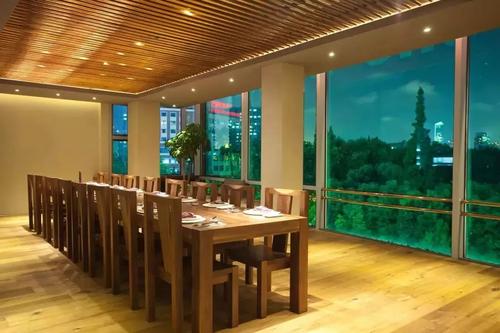
If you are a vegetarian, the Former French Concession is the best place to experience Chinese vegetarian restaurants. Here, people can experience a strong Buddhist charm that complements vegetarian culture. The waiters wear cotton and hemp clothes which make the customers feel comfortable and relaxed. The name and appearance of this restaurant’s dishes are extremely attractive. It is hard to imagine that they are all made of beans, mushrooms, and vegetables, etc. non-meat ingredients.
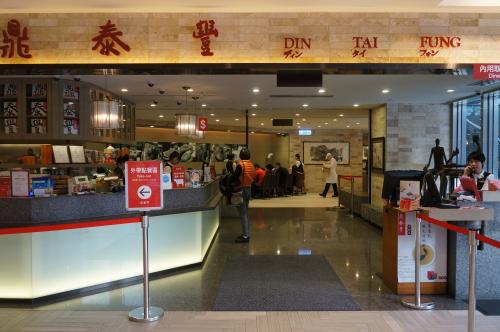
Din Tai Fung, located at unit 11A, 2/F, New World Plaza South Section, Lane 123 Xingye Road, Luwan District, Shanghai, is a world-famous authentic Chinese cuisine restaurant and it is especially famous for its delicious Taiwanese Xiaolongbao(Steamed Small Meat Dumpling in Basket). It was founded in 1972 in Taiwan, China. Over the past few decades, it has gone through a glorious process from brand establishment to flourishing development. It has opened branches in Japan, the United States, Singapore, and other countries. In 1993 Din Tai Fung restaurant was selected as “One of the Top Ten Gourmet Restaurants” by the New York Times. This restaurant is one you cannot miss when you come to the Former French Concession.
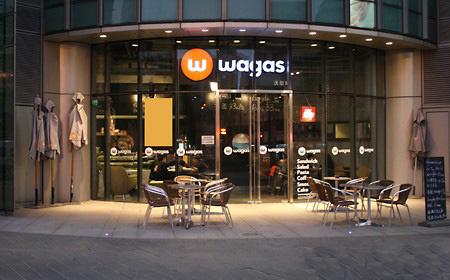
The Shanghai Wagas is located at 1/F, Zhonghuan Plaza, No.381 Huaihai Middle Road, Luwan District, Shanghai. The beef roll in this restaurant is incredibly special. The salmon pasta is also delicious and not greasy. This restaurant is the best choice for those who want to eat light and fat-reduced meals.
Xie Huang Yu, located at No.200 Taicang Road, Shanghai, is an extremely popular crab noodle restaurant. The main products are authentic Shanghai crab noodle series, especially the featured crab fish noodle and crab gold noodle. There are fried pork chops, crab wonton, crab rice, and other snacks. The queue time is about 30-50 minutes. The restaurant is not big, but it is immensely popular. Crab noodles are covered with thick crab roe and crab meat and drizzled with ginger vinegar, which tastes delicious.
Sun Yat-sen is a Chinese national hero, patriot, great pioneer of China’s democratic revolution and founder of the Republic of China. As an advocator of the Three Principles of the People, he raised the banner of anti-imperialism and anti-feudalism to put an end to China’s two thousand years of feudal monarchy.

The Former Residence of Sun Yat-sen is located at No.7 Xiangshan Road, Shanghai. It is a two-story European-style building. Compared with the nearby high-rise buildings and luxury houses, it may not be so eye-catching, but since it opened in 1988, it has won the tourists’ sincere respect and admiration.
From 1918 to 1925, Dr. Sun Yat-sen completed many famous works and formulated the Three Principles of the People in his former residence. It was also here that he met the representatives of the Communist Party of China and promoted the first cooperation between the two major political parties in modern Chinese history. In the last few years of this great man, his enthusiasm and contribution to the Chinese revolution were witnessed here. In 1961 the Former Residence of Sun Yat-Sen was listed as one of the national key cultural relics protection units.
When you enter the house, you can recreate the life of the owner through each exhibit. The knives hanging on the fireplace, the photos hanging on the living room wall, the books on the bookshelf, and even a pair of glasses once used all show the past life of Dr. Sun Yat-sen. Every year, special activities are held to commemorate Dr. Sun Yat-sen on his birthday (November 12) and deathday (March 12).

Fuxing Park is located at No.105 Yandang Road, Shanghai. It is the only garden in Shanghai that retains the French classical style. It is also one of the masterpieces of the integration of Chinese and Western gardens in modern Shanghai.
The style of the whole park is a combination of the regular and natural layout. The north and middle parts are dominated by a regular layout, with flower beds, a central fountain, and a rose garden. The southwest is mainly a natural layout with a rockery area, lotus pool, stream, winding path, and big lawn. It integrates Chinese and Western styles and highlights the French regular gardening style. The flower beds here are sunken, when standing on the ground, people will have a better outlook of the whole flower beds which is a major feature of the park.
There is a bar called Park 97 Bar and different theme parties are usually held every weekend and holiday. In addition, there is an amusement park for children in the West Centre of Fuxing Park.
Sinan Road, formerly known as Massenet Road, was built in 1914. On August 13, 1912, a famous French musician Massenet died in Paris. In memory of him, the Council of the French Concession named the road Massenet Road.
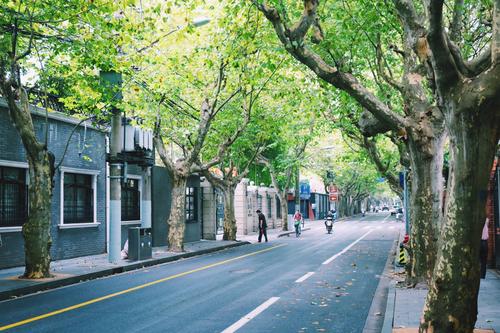
On both sides of the road are beautiful French plane trees and exquisite houses. Sinan road has more than 20 garden-style houses which concentrate almost all the residential styles of old Shanghai.
There are no buses, no neon signs, just some old-fashioned streetlights. This makes Sinan Road one of the best and most beautiful old streets in Shanghai. As one of the 11 historic preservation areas in Shanghai, Sinan Road records the “Original Ecology” of garden houses in those years.
Many houses on Sinan Road used to be the former residences of celebrities. Former Chinese Premier Zhou Enlai used to live at No.73 Sinan Road, a Spanish-style garden house. In addition, Mei Lanfang, a Chinese Peking Opera artist, Sun Yat-Sen, a modern Chinese democratic revolutionist, and his wife Soong Ching-ling also lived in Sinan Road. The houses are still well-preserved and can be visited.
Sinan Road also brings together a variety of boutique hotels, restaurants, bars, cafes, teahouses. Whether it is shopping, eating, overnight stays or enjoying European architecture, this place can meet your needs.
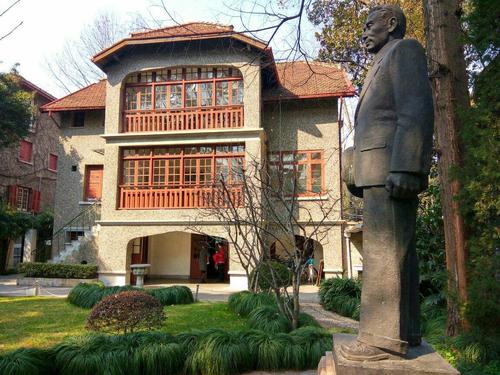
The Former Residence of Zhou Enlai, located at No.73 Sinan Road, Luwan District, Shanghai, is a cultural relic protection unit at the municipal level in Shanghai. It is the former site of the Shanghai Office of the Communist Party of China, also known as “Zhou Mansion”.
The whole building is a well-preserved Spanish garden building. Now you can still see the layout of the rooms at that time, as well as some exquisite furniture at that time. Zhou Enlai met Marshall here and held a press conference.
On the first floor of the building, there is a cottage and a garage with a replica of a Buick car used by Zhou Enlai.
On the second floor of the building, there are some offices and bedrooms for the staff at that time. Besides, you can also see radios, English typewriters, mimeographs, and other exhibits.
In the garden of this building, you can see a statue of Premier Zhou on the lawn. There is also a cedar that is said to be planted by Zhou Enlai and his wife.
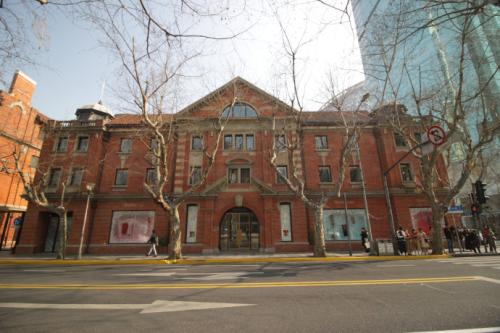
Huaihai Middle Road is located in the centre of Shanghai, China, starting from Xizang South Road in the east and Huashan Road in the west, with a total length of 2.2 km. Huaihai Middle Road is one of the most bustling commercial streets in Shanghai. It was founded in 1900 and was originally named Xijiang Road. In May 1950, it was renamed “Huaihai Middle Road” to commemorate the victory of the Huaihai Campaign.
Huaihai Middle Road has the same reputation as Nanjing East Road, Hengshan Road, Rongle East Road, Fuzhou Road, and Sichuan North Road in Shanghai. If Nanjing East Road is the symbol of Shanghai’s commercial prosperity, Huaihai Middle Road is more of the symbol of a kind of taste and style. Huaihai Middle Road is recognized as the most modern and fashionable street in Shanghai. The modern buildings, fashionable products, elegant shopping environment, and many high-end restaurants make Huaihai Middle Road an indispensable street in Shanghai. Huaihai Middle Road which is famous for its elegance and romance is a shopping paradise for people.
Moller Villa, located at No. 30, Shannxi South Road, Shanghai, covers an area of more than 5,000 square metres, with a garden area of nearly 2,000 square metres.

In 1926, an English little girl living in Shanghai had a very magical dream. In her dream, she dreamed that she had an “Andersen’s Fairy Tale Castle”; so, Mahler, the little girl’s father, decided to build a house according to her daughter’s dream. He invited a designer to design this castle-style villa of Nordic architectural style and invested a huge amount of money to complete it in 1936. This house not only was the symbol of his daughter’s dream but also commemorated his early adventurous life. However, shortly after the completion of the villa, the Mahler family left it as the outbreak of the Anti-Japanese War. After the Japanese entered the Concession in 1941, the Mahler family was driven to the concentration camp and the villa was occupied by the Japanese. After the victory of the Anti-Japanese War, Moller Villa was occupied by the Kuomintang government.
This colourful fairy tale villa has Norwegian-style spires, Gothic spires, Chinese-style glazed tiles, tiger-shaped windows and colourful tiles. Beautiful and exquisite patterns are carved everywhere. The gate of the villa is small and the interior of the villa is decorated like a luxury cruise ship.
Wukang Road, formerly known as Route Ferguson Road, is located in the Xuhui District of Shanghai. It was named after one American missionary John Ferguson and was built by the Shanghai Council of French Concession in 1907. Wukang Road starts from Huashan Road in the north and ends at Huaihai Middle Road in the south, with a total length of about 1200 meters.
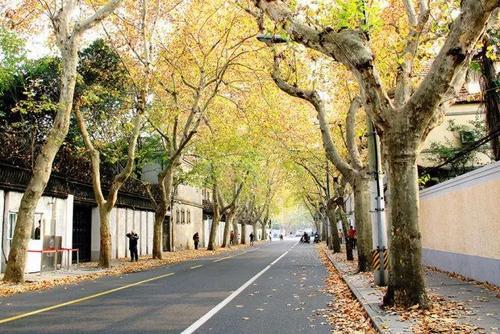
On both sides of the road are plane trees and many European architectures built in the early twentieth century, where many celebrities lived. There are also many star shops worth visiting on Wukang Road, including restaurants, snack bars, and fashion shops. There are lots of excellent historical buildings along Wukang Road, of which, 37 historical buildings are well-preserved.
No. 390 of Wukang Road used to be the Consulate General of Italy, through which, a large number of young people who want to serve their country are able to study abroad. After liberation, it became the site of Shanghai Automotive Group, a global top 500 enterprise, where China’s first Santana car was created. No. 393 was the former residence of Huang Xing, the revolutionary pioneer of the Republic of China. Sun Yat-sen used to discuss revolutionary matters with him at this residence. Hu’nan Villa, located at the intersection of Wukang Road and Hu’nan Road, was Zhou Fohai’s private house. After liberation, Chen Yi and Deng Xiaoping lived here temporarily. Kao Kun, a Chinese American scientist who won the Nobel Prize in physics in 2009 also lived in this area. No. 113 is the former residence of Ba Jin, a literary giant.
On June 11, 2011, Wukang Road was selected as the third “Famous Street of Chinese History and Culture” approved by the Ministry of Culture and the State Administration of Cultural Relics.
Hengshan Road, founded in 1922, was as famous as Nanjing East Road in Shanghai, with a total length of 2.3 km. Hengshan Road is adjacent to Xujiahui commercial centre in the South and Huaihai Road in the north. It is a quiet and elegant passage between the two prosperous areas.
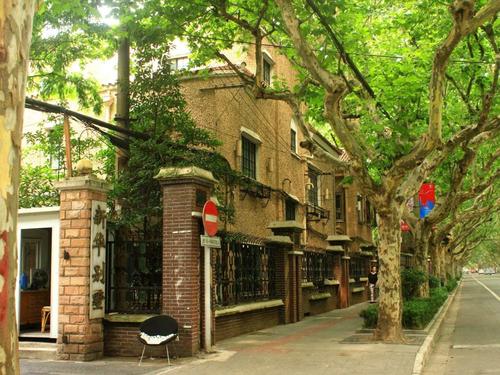
Hengshan Road is one of the main traffic roads in Shanghai. Metro Line 1 passes through it. The luxuriant French plane trees and all kinds of high-grade European architectures add a rich and exotic cultural atmosphere to Hengshan Road. Hengshan Road is one of the most prestigious leisure and entertainment roads in Shanghai.
The French plane tree, the European-style fence, the reddish-brown sidewalk, and the European garden-style villa built along the street, all reflect the history of old Shanghai. The most charming leisure culture on Hengshan Road is the bar culture on Hengshan Road. The bar creates a hazy, emotional, and unique Shanghai charm for Hengshan Road, attracting a large number of tourists who come to Shanghai for many different reasons.
Hengshan Road mainly has more than 100 bars, tea houses, hotels, entertainment centres, beauty salons and galleries attracting the young people of high-end consumption level. Besides, the plane trees on both sides of Hengshan Road also become one attraction in Shanghai.
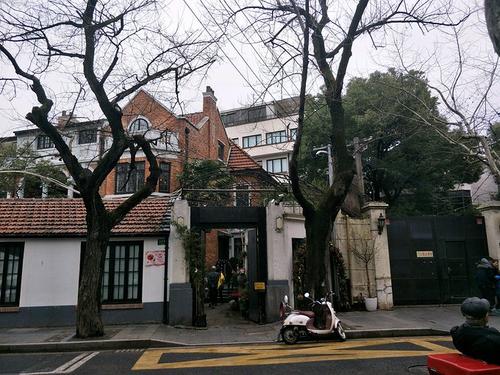
The Former Residence of Huang Xing is located at No. 393, Wukang Road. It is a white four-story building. Huang Xing is the descendant of Huang Tingjian, a great writer in the Northern Song Dynasty(960AD-1127AD). As a democratic revolutionist in modern China, Huang Xing is one of the founders of the Republic of China and the first intimate friend of Dr. Sun Yat-sen.
The construction of the Former Residence of Huang Xing began in 1912 and ended in 1915. It is a classical-style building with a typical decorative art style in the early 20th century. The whole building has 4 floors with a reinforced concrete structure, covering an area of 255 square metres and a building area of 749 square metres. There are pines, green grass, grapes, wisteria and other beautiful flowers and trees in the garden. There is a pavilion in the southwest with an elegant environment. There are marble steps on the ground floor. There are various types of windows here making the building environment simple and elegant. The interior stairs are exquisite and gorgeous. The ceiling is decorated with plaster patterns which makes the interior of the whole building very delicate.
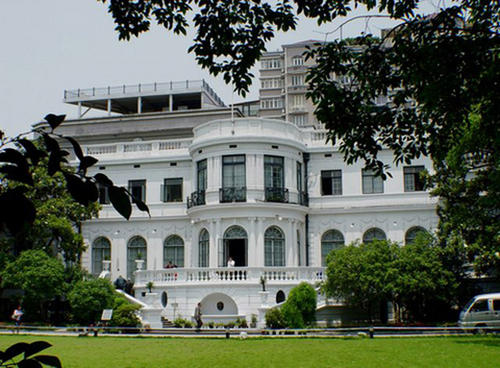
Arts and Crafts Museum, located on the quiet Fenyang Road, covers a total area of 5,862 square metres and a building area of 1,496 square metres, with a three-story hybrid structure. The whole museum is a Renaissance-style house with two floors and a mixed structure of brick and wood. More than ten specialties, such as embroidery, costumes, velvet products, bamboo carving, and boxwood carving are exhibited in the museum, basically covering all the local traditional crafts in Shanghai.
Arts and Crafts Museum is divided into Embroidery Museum, Sculpture Museum as well as Folk Arts and Crafts Museum, displaying nearly 300 works, which can reflect the Shanghai arts and crafts development. Its exhibits and collections complement the modern arts and crafts beyond the collection of Shanghai Museum. This is a distinctive museum in Shanghai.
For hundreds of years, the Arts and Crafts Museum has absorbed the expertise of various regions and formed the Shanghai-style arts and crafts with distinctive regional style. At the beginning of the establishment of the Shanghai Institute of Arts and crafts, the Chinese government attached great importance to the traditional arts and crafts, besides, gathered a group of masters of folk art with unique skills in Shanghai and further established the protection policy for the traditional arts and crafts. It is under the implementation of this policy that the older generation of arts and crafts masters have left exquisite and elegant works, a brilliant page for China’s arts and crafts industry as well as precious wealth for future generations. Many of their works have reached the peak, and so far, no one can surpass them.
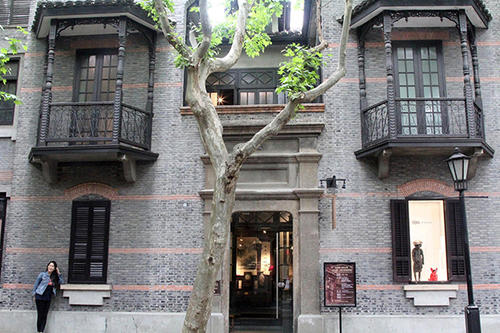
Shikumen Museum is a well-preserved and transformed old house built in the 1920s. The whole museum covers an area of 367.2 square metres, with a building area of 513.9 square metres. It was built according to the pattern of one house in the 1920s. It mainly has seven exhibition rooms including one living room, one study, one elders’ room, one master’s room, one daughter’s room, one pavilion, and one kitchen. It not only shows the unique architectural culture of Shikumen in Shanghai but also recreates the living space and lifestyle of Shanghai people, besides, introduces the concept, transformation and development process of the Shanghai Xintiandi project.
All the exhibits in the museum are real objects from the Shikumen alley in the 1920s and 1930s. Sitting in the front of a dressing table in the master’s room on the second floor and playing with the exquisite “Pechoin” rouge and the green jade hairpin, it seems that you were a middle-class modernist woman in the 1930s who are enjoying the beautiful life. From the English magazine printed with Hollywood pictures in her daughter’s room, you can easily know that this is the room of a fashionable and energetic young woman. Compared with her mother, she obviously knows more about the world and wants to know more.
Through the multimedia distributed in each room, you can hear a story about the Shikumen life of the middle-class families in Shanghai in the 1920s and 1930s. No matter which room you go into, it seems like you are experiencing the life of the room owner.
Xintiandi → Fuxing Park → Sinan Road → Former Residence of Dr. Sun Yat-sen → Sinan Mansions → Former Residence of Zhou Enlai → Taikang Road – Tianzifang → Jianguo Middle Road → Ruijin Second Road → Shaoxin Road → Shaanxi Road → Yongjia Road → Cultural Square → South Maoming Road → Rui Jin Guesthouse → Wukang Road → Middle Huaihai Road → Jinjiang Hotel → Garden Hotel → Changle Road → Julu Road → Moller Villa → North Xiangyang Road → Orthodox Cathedral → Xinle Road → Fenyang Road → Conservatory of Music → Arts and Crafts Museum → Dongping Road → Hengshan Road → Christian Church → Xujiahui
Take subway No.10 or 13 and get off at the station of Xintiandi.
Chinese: 请带我去上海旧法租界。English: Please take me to the Former French Concession.
If you go to the Former French Concession from the Shanghai Pudong International Airport, it takes about 50 minutes (about 160 yuan).
If you go to the Former French Concession from the Shanghai Railway Station, it takes about 25 minutes (about 25 yuan).
If you go to the Former French Concession from the Shanghai Hongqiao International Airport, it takes about 1 hour (about 70 yuan).
